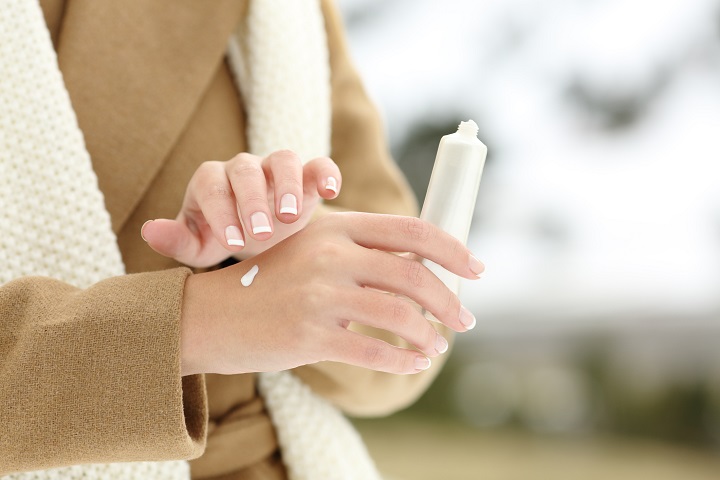
Cold temps, dry air and harsh winds are all hard on your skin.
Try these tips from wound healing expert Jillian Simon, FNP, CWON to protect your skin throughout winter.
“Your skin is your biggest organ; its job is to protect your whole body,” Jillian says. “If you don’t protect it, that can lead to skin injuries, risk of infection (cellulitis), and other health problems.”
Dryness is the biggest concern. “Dry skin is more likely to break down or tear,” Jillian says. “A moisture barrier is your first defense. You want to maintain that moisture to keep your skin healthy.”
Moisturize on the outside:
Apply a thick cream or ointment twice a day. CeraVe and Vanicream are good options that are widely available. Both are made for sensitive skin, so they’re a good option for all skin types.
Creams and ointments are thicker than lotion, so they provide a better protective layer to lock in moisture and keep skin hydrated. “You can put ointment on at night to give it lots of time to absorb,” Jillian says. “Choose creams to use during the day.”
Avoid too much hand sanitizer. It’s alcohol-based, which dries out your skin. Use mild soap instead.
Find a lip balm your kids like. Kids are prone to chapped lips and cheeks. Lip balm creates a moisture barrier . . . but only if kids will wear it. Steer clear of scents or flavors that tempt kids to lick or chew on their lips.
Moisturize from the inside:
Take Vitamin C and zinc, together. Your body uses Vitamin C to produce collagen, a protein that grows and repairs skin (plus cartilage, tendons, and ligaments). Zinc helps your body absorb Vitamin C. Take them together to prime your body to repair compromised skin. Bonus: they boost your immune system overall.
Eat more protein, especially if you’re 60 or older. Aim for 60-80 grams of protein a day. (Most of us only eat 20-30 grams a day). Protein affects collagen production, which slows down as we age.
Drink more water. Hydration is as important in winter as it is in summer . . . even if you’re not sweating.
If you get a cut or scrape, don’t let it dry out like you would in the summertime. “It’s already dry in winter,” Jillian explains. “The skin likes a certain amount of moisture when it’s healing. It’s like Goldilocks: You don’t want it too wet or too dry. You want it just right.”
“Moist healing” helps prevent dehydration, reduces risk of infection, and promotes faster healing by giving repair cells an easier surface to migrate across the wound as it heals.
Keep cuts and scrapes covered with a bandage. Moisturize the site with petroleum jelly.
See your provider if you have:
- Pain
- Redness spreading beyond the original affected area
- Oozing
These are all signs of infection.
If your skin isn’t improving after 3-5 days of moisturizing with cream or ointment, see your provider. “There may be something else going on,” Jillian says. “It’s a good idea to get it checked out.”
